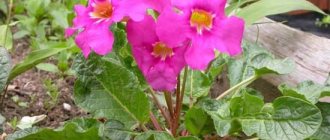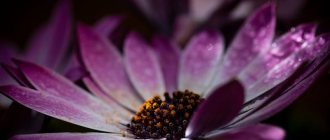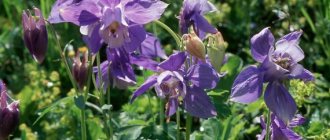It is believed that growing primrose from seeds is quite a troublesome task. This is partly true, but this is due to the fact that after sowing many seeds may not germinate. However, if the activity is carried out correctly, you can achieve good results and grow strong seedlings. And all your investment of time and effort will pay off with the beautiful and graceful flowering of an interesting garden flower.
When to plant primrose seeds for seedlings
The timing of sowing primrose seedlings may vary for different plant varieties. Therefore, pay attention to the information on the packaging; it indicates the optimal time for a particular variety. As a rule, seeds are planted in January, February, March.
But first of all, you need to pay attention to the weather and climatic features of the regions in which cultivation is planned:
- In the South, you can sow in January or early February;
- In the middle zone (including the Moscow region) - in mid-February;
- In Siberia, the Urals, and the Leningrad region, it is better to plant in March.
When deciding when it is best to plant primrose seedlings, many gardeners and flower growers successfully resort to the lunar calendar. It helps you choose not only the most optimal days, but also the unsuitable ones. This plant is a perennial crop, but can be grown as an annual, so you need to take this feature into account. According to the 2021 Lunar Calendar, it is better to sow primrose seedlings as follows:
- Favorable days: in January: 1, 2, 10, 11, 15, 16, 19, 20, 27, 29;
- in February: 17, 18, 22, 23, 24;
- in March: 1, 3, 4, 20, 21, 29, 30;
- in April: 9, 10, 15, 16, 17.
- Unfavorable days: in January: 12, 21, 22, 28;
- in February: 11, 27;
- in March: 12, 28;
- in April: 11, 26.
Seedling care
The suitable germination temperature is 16-18℃ above zero. Lighting should be chosen based on the varieties of primroses. They sprout in the light:
- hybrids;
- common primrose, Japanese;
- pink, florida;
- pubescent.
Direct sunlight has a negative effect. Siebold, fine-toothed and tall sprout in the dark. They are covered with black film. Shoots form in 18-20 days. At the same time, carefully monitor the condition of the soil:
- Drying out, as well as waterlogging, are destructive.
- The glass or film is opened gradually so that the first shoots get used to the air. Open the containers after 2 weeks.
- The seedlings grow slowly. When strong seedlings emerge, you will need a lot of bright, diffused light. In direct sunlight, the seedlings will die.
Selection and preparation of containers
With the choice of landing container, everything is now very convenient and simple. In any store specializing in goods for the garden and garden, or a regular hypermarket, you can buy a variety of containers for planting. You can also use improvised means, for example, various bowls, cut plastic bottles, etc.
It is very convenient to plant primrose seeds in the following containers:
- plastic box:
- wooden box;
- plastic cassettes;
- peat pots;
- plastic cups;
- peat tablets.
Since flower seedlings need picking, it is very convenient to initially sow the seeds in a common plastic or wooden box, and then plant them . But when growing in peat tablets, there is no need to pick seedlings.
Important! There must be drainage holes at the bottom of the planting container. If you did not find them when purchasing, then you need to make holes yourself. The exception is peat tablets and pots; there is no need to make holes in them!
Before planting seeds, it is recommended to disinfect containers (except peat tablets). Simply rinse the container with a solution of potassium permanganate or a fungicide solution.
Preparing soil for seedlings
The soil for growing primrose must be fertile, light, with good moisture and air permeability . You can buy universal soil for flower seedlings or prepare a soil mixture with your own hands at home. If you are attracted to the latter option, you can mix the following ingredients:
- leaf humus (2 parts);
- sand (1 part);
- turf land (1 part).
of perlite or vermiculite to both purchased soil and home-made soil ; they will improve the properties of the soil.
Before planting, it is recommended to prepare the soil a month (or at least several weeks) by disinfection. You can pickle (sprinkle the soil with a solution of potassium permanganate or a solution of Fitosporin), you can calcinate it in the oven (place the soil on a baking sheet, layer - 1.5 cm, leave for half an hour at 90 degrees), steam (place the soil on a sieve over steam for an hour and a half) or freeze (the soil is kept in the cold for ten days, then transferred to a warm place for the same number of days and again taken out into the cold).
Growing methods
Primrose from seeds at home is a quick way to grow ornamental bushes with bright flowers. For this method, the time of year does not matter much. But a prerequisite is the presence of a warm, well-ventilated room with a temperature not lower than +17°C.
When sowing in spring, the seeds germinate on the 25th day, when sowing in autumn - after four to five months. You can use planting material that was previously collected by the gardener himself, or buy high-quality ready-made material.
Selection and preparation of primrose seeds
Seed material can be either purchased or collected yourself. If the first option is more convenient for you, then it is recommended to buy primrose seeds in trusted stores and from reputable sellers.
Nowadays you can find many varieties, both hybrid and regular, in specialized points of sale and online stores. Often there are mixtures that include crops of different colors.
Advice! It is recommended to choose the freshest seeds. It is believed that this kind of seed germinates better and is capable of producing the highest quality seedlings.
Pay attention to the packaging with seeds : it should contain all the information about the variety, optimal sowing dates, planting in open ground, and expiration date.
As mentioned above, you can collect primrose seeds yourself . But keep in mind that they are small and should be collected carefully. The seeds ripen in the bolls of the plant; they should be collected in July-August; the seed bolls should be slightly open, but not fully opened. After collection, it is recommended to dry them a little.
Important! Seeds that you collected with your own hands cannot be stored for a long time, otherwise they will quickly lose their viability. And after collection and before planting, you need to store them in cool conditions.
Before planting primrose seedlings, it is recommended to disinfect the seeds . To do this, pour them into a fabric bag or wrap them in gauze, immerse them in a weak solution of potassium permanganate or a weak fungicide for 20 minutes. Then rinse under running water.
Description of the variety
Common primrose (P. vulgaris) or stemless primrose (P. acaulis) is a type of primrose, consisting of perennial herbaceous plants 5-20 cm high. Their superficial root system consists of many brown thick roots. The oblong lanceolate leaves are wrinkled, pubescent on the underside, with small teeth along the edges.
The flowers are funnel-shaped, usually reach 2-4 cm in diameter, on low pedicels growing directly from the rhizome, slightly rising above the leaf rosette. In flowers, species plants are more characterized by white, yellow, shades of pink and red, while hybrid varieties have a more diverse palette of shapes and colors. Species primroses and hybrids are distinguished by the color and structure of the inflorescences. Thus, ordinary primrose flowers are often smaller, collected in inflorescences and located on peduncles up to 20 cm high.
Stemless primroses and its hybrids are easy to distinguish from other primroses - the flowers are always solitary, not collected in an inflorescence, each on its own stem.
Hybrids of stemless primrose have single flowers of somewhat larger sizes, sometimes double, located on separate peduncles and surrounded by large bracts. It is the hybrid varieties of stemless primrose that are often called “primrose acaulis” (acaulis).
Step-by-step instructions for sowing primrose seeds for seedlings
The scheme for planting primrose seedlings is quite simple. If you know the process technology, you can do everything correctly without any problems. Step-by-step instructions will help you sow seeds according to all the rules:
- Fill the container with soil, water it carefully and thoroughly level the surface.
- Perform shallow sowing (planting frequency - no more than five seeds per square cm; denser plantings are very undesirable). For convenience, you can use tweezers or a wooden toothpick (moisten the end, pick up the seed, and use another toothpick to sweep it into the ground).
By the way! You can plant primrose seeds on clean snow. Just spread the snow over the surface of the soil, scatter the seed on top and wait for the snow to melt. The seeds, along with the snow, will go down to the required depth on their own.
- After sowing, there is no need to sprinkle the seeds on top with soil or sand. The seeds should be lightly immersed in the soil.
- Spray with a spray bottle.
- Cover the container with the crops with a lid, film or glass (to create a mini-greenhouse).
Note! Seeds should be planted according to this scheme, regardless of whether stratification is carried out or whether it is carried out before or after planting.
Video: technology for planting primrose on snow.
Planting primrose in peat tablets differs from the sowing scheme in conventional containers (box, cup, cassettes). You do not need to pre-prepare the soil or disinfect them. All you need to do is prepare the tablets: put them in a tray with warm water for half an hour, they will swell and be completely ready for use. After draining the remaining water, you can plant flowers.
Pests and possible diseases after planting
Possible diseases:
- powdery mildew (cause: high humidity);
- gray rot (cause: increased humidity and excess nitrogen in the soil);
- ramulariasis (cause: waterlogging);
- vascular or tracheomycosis wilt (cause: fungi from the genera Fusarium and Verticillium);
- leaf lesions: anthracnose, ascochyta blight, septoria blight, etc. (reason: fungus and waterlogging, acidic soil, lack of microelements in the soil).
Pests:
caterpillar;
- mite;
- aphid;
- whitefly;
- slugs, etc.
It is necessary to inspect the primrose daily , add fertilizer and promptly remove nocturnal pests for which the seeds are food.
Depending on the disease that affects the plant, treatment is selected. In case of aphid infestation, primroses are treated with a soap solution, in case of severe infestation - with Antitlin, Tobacco dust, Actellik.
Mandatory stratification of primrose seeds
This crop has a peculiarity - the seeds need stratification, which is carried out immediately after sowing or before the event . Stratification (that is, hardening) at home imitates natural cold conditions and helps to obtain faster seed germination, uniform shoots and strong seedlings. Indeed, in nature, without human intervention, seeds fall from the seed pod directly onto the ground. They remain on the ground surface throughout the winter, often under snow and in the cold. And after that, wonderful plants grow in the spring.
Almost all varieties of primrose need this procedure (except ordinary and fine-toothed).
Important! Before sowing, it is recommended to study the information on the seed package. Some hybrid varieties do not require stratification; this information will be indicated on the packaging.
Let's consider two main methods of stratification:
Frosty stratification of primrose on snow
A characteristic feature of this method is that the seeds must be kept for some time at subzero temperatures . First of all, sowing should be done according to the standard scheme described above. Then you should immerse the container in a plastic bag.
For frost stratification, it is necessary to place the container with seeds in a place with a temperature of -5... -8°C, but not lower than 10 degrees below zero. A snowdrift is ideal , just place the container in the snow. The container with seeds should be kept in frosty conditions for 10-20 days.
Important! With this method of stratification, there is no need to water the soil before planting, during the procedure and after sowing!
Cold stratification at positive temperatures
This method is objectively simpler; you do not need to take the crops out into the streets and look for snowdrifts. Its main difference from the above is that it is necessary to keep the seeds in conditions with a positive temperature.
Cold stratification can be done using two technologies: prepared before sowing by soaking or sown directly into the soil. Let's take a closer look:
- Soaking the seeds is done as follows:
- Place the seed on a damp cloth, gauze or cotton pads. You can also soak the seeds in a damp foam sponge, which is first cut into two parts; the seed material is located between the parts of the sponge.
- A cloth, cotton pad or sponge with seeds is wrapped in a bag and placed in the refrigerator for 10-14 days. In this case, it is necessary to regularly remove the container and check the seeds, at the same time ventilating them. It is also necessary to moisten with a spray bottle as it dries.
- After the specified period, the seeds are moved to a warm place until germination.
- After germination, you need to sow the seeds according to the standard scheme.
- Immediately after this, cover the crops with film or glass.
- Stratification without pre-soaking carried out using the following technology:
- Sow primrose seeds according to the standard scheme, cover with glass or film.
- Then wrap the container in plastic and place it in a warm place for five days.
- Immediately after the seeds swell, but before the sprouts appear, it is necessary to transfer the container with the seeds to the refrigerator for 10 days.
- After this, the seedlings are transferred to optimal conditions (more on this below).
When to sow some varieties?
How to plant seeds of different types of primroses?
Stemless and stemless Potsdam giants
Growing from seeds. Store primrose seeds at temperatures up to +7 degrees!
Peculiarities:
- It is necessary to soak the seeds before sowing in a weak solution of potassium permanganate.
- After sowing, place the container with seeds in the refrigerator for 7-10 days.
Ushkovaya
Growing from seeds.
How to care for primrose seedlings
Regardless of whether the seeds have undergone stratification or not, the seedlings need quality care, which will help to obtain strong seedlings and beautiful flowers in the future.
You need to care for primrose seedlings as follows:
- For germination, it is necessary to provide future seedlings with optimal temperature conditions . After stratification or normal planting (if hardening was not done), you need to move the container with the seeds to a room where the temperature is maintained at 16-18 degrees Celsius . With proper care, shoots appear in about 2-3 weeks.
- You should also take care of proper lighting . It is necessary to place the container in a sunny place, but the light must be diffused ! If you have fine-toothed primrose, Siebold or High primrose, then the container should be placed in the shade, but after the seeds germinate, they are moved to a sunny place with diffused light.
- Monitor humidity . It is necessary to water moderately, do not add a lot of water and do not allow it to dry out. Before emergence, watering should be done by spraying from a spray bottle. After germination, the seedling can be watered from a syringe, watering can or other vessel, but very carefully. Watering is carried out immediately when the surface dries slightly.
- Before emergence, it is necessary to ventilate the container . To do this, remove the lid or film every day for about 15-20 minutes. Wipe any resulting drops from the covering material.
- After germination, the lid or film is permanently removed, but you need to remove the mini-greenhouse gradually! First, the lid, film or glass is removed for half an hour, every day the time increases and after about 10 days the covering material is completely removed.
- Seedlings should be fed as needed, for example, plants grow too slowly and look frail. You can apply fertilizer from the moment the first leaves appear. It is recommended to use complex mineral fertilizers, but the concentration should be 2 times lower than the dosage indicated on the drug. The frequency of feeding is once every 10-14 days . If everything is fine with your seedlings, they are strong, healthy, and growing well, then you can feed them only once or twice during the entire period from sowing to planting in open ground.
Primula vulgare
Common primrose or stemless is a perennial plant whose homeland can be considered Southern and Central Europe, Crimea, and the Caucasus. It grows everywhere in the temperate climate zone, and is one of the first to bloom, almost immediately after the spring melting of snow.
Therefore, people often call this flower a primrose. And its Latin name Primula comes from the word primus - first.
There may not be grass yet, but the primrose is already blooming
Many summer residents grow stemless primrose in the garden, in open ground, as a perennial plant. But no matter how early it is, you shouldn’t wait for the first flowers in the middle zone before April, or even May.
If you take care of growing seedlings in a greenhouse, starting in mid-summer, you can get flowering bushes by the New Year, by March 8, and by other winter and early spring holidays. At this time of year, fresh flowers are especially valued, and a bright and lush primrose in a pot or a beautiful flowerpot is in no way inferior to bouquets of cut roses or tulips (see Growing tulips in a greenhouse: how to do it right).
Hybrid varieties of primroses differ from traditional ones in their unusual color and flower size.
It blooms for at least 2-3 weeks, and if you keep it cool, even longer.
The advantage of hybrid varieties is that their cultivation does not require stratification - seed hardening, which is necessary for garden primroses. They are immediately planted in the ground, germinated, planted, and after 5-7 months from the date of sowing, a flowering miracle is obtained.
Look for yourself: they really are extraordinarily beautiful:
Salome Orange Sun
Sphinx F1 Rose Shades
Eclipse Violet with Rim
Sphinx F1 Neon Rose
Lime Green
Sphinx F1 Real Orange
Advice. When the plants finish flowering and it becomes warm enough outside, they can be transplanted into open ground. There is a chance that they will take root and bloom in the spring for many more years.
How and when to plant primrose seedlings
Like seedlings of many crops, primrose seedlings need picking, that is, transplanting into larger containers with a larger feeding area. When is the best time to have the procedure? The optimal timing of picking is determined by the plant - the seedlings should be in the phase of two true leaves . As a rule, when growing this crop, 2 pickings are carried out.
The soil for diving can be used the same as for sowing that you did earlier. However, you need to select other containers. For example, you can choose larger peat or plastic cups or boxes. They must have drainage holes!
Scheme for picking primrose seedlings:
- An hour before the procedure, the plants are thoroughly watered.
- A drainage layer of about 1 centimeter is placed at the bottom of new containers; you can use eggshells or expanded clay. The soil is poured, there should be a gap of about two centimeters between the soil and the edges of the container.
- Small holes are made in the new container. If there is a common container, then there should be a distance of 5 centimeters between the holes. If it is an individual container (pot, glass), then its diameter should be 10 centimeters and one hole should be made. The soil is spilled with warm water.
- The seedlings are carefully removed from the soil using a wooden spatula or plastic spoon. It is necessary to carry out manipulations very carefully so as not to damage the delicate roots.
- Then you need to very carefully compact the soil around the seedling to eliminate air around the roots.
- After transplanting the seedling to a new location, careful watering is carried out.
After picking, it is necessary to place the plants in partial shade for about a week so that they regain their strength and take root. Due to direct sunlight, seedlings may wilt.
If you plan to transplant seedlings into open ground only at the end of summer, then at the beginning of June you should dive a second time. This time you should use individual containers with a diameter of at least 15 centimeters. After the procedure, the plants need to be transferred to a greenhouse.
Agricultural technology for growing primroses in a greenhouse
Primroses have varieties of early, mid and late flowering. To prepare for the holidays, they begin to be sown from mid-July to the end of August - beginning of September, focusing on the variety, the light zone, and the growing conditions.
For example, in Crimea you can even do without a heated greenhouse in order to create conditions suitable for these plants, but in colder regions, you will have to take care of heating it (see Heating a greenhouse with your own hands: workshop). But don’t be alarmed: it’s during the coldest months that the temperature will need to be kept relatively low.
However, first things first.
Seed preparation
Primrose seeds are very capricious. Therefore, it is important to remember the following rules:
- Your seeds collected from faded plants must be dried and constantly stored in a hermetically sealed plastic bag at a temperature no higher than plus 5-7 degrees;
- If you leave them stored indoors, germination will greatly decrease. Especially if the temperature exceeds 22-25 degrees Celsius;
- Seeds are taken out of the refrigerator no earlier than a day before sowing. But they do not open it, but leave it for acclimatization in the room where the sowing will take place.
Primrose seeds are stored in the refrigerator, from where they are taken out a day before planting in the ground.
It is important. From the seeds of hybrid varieties it is impossible to obtain flowers with the same characteristics as the parent plant. It is generally impossible to predict in advance what will come of them. If this matters to you, then it is better to buy seeds of proven hybrids every time.
Another important nuance: hybrids do not need stratification (hardening). But small-flowered garden varieties need it. This is provided by nature itself. Therefore, immediately after sowing, they are sent for a month either to a freezer at a temperature of about minus 10 degrees, or the container is buried in the snow.
Since there is no snow in the summer, and growing flowers for sale on an industrial scale requires a special separate freezer, in our case it is still better to use hybrids.
Growing rules and conditions
For quick and friendly seed germination, you need a temperature of +18…22 degrees. If it is higher, the seeds will go dormant.
It can be hotter in July and August, so the greenhouse should be equipped with vents and fans (see Do-it-yourself ventilation in a greenhouse - this is possible).
To maintain the optimal temperature, the greenhouse must be equipped not only with heaters, but also with ventilation.
Another important condition is high air humidity at 95-98%. You can achieve this in different ways:
- Place containers of water next to the boxes with sown seeds;
- Pour wet sawdust and water it periodically;
- Place the boxes themselves in pallets with damp expanded clay or moss.
Note! The sprouts themselves cannot be sprayed or watered from above! Watering is carried out only from below, from pallets.
High air humidity is a prerequisite for seed germination and sprout development
The sequential process of growing seedlings looks like this:
| Image | Description |
Soil preparation | To purchased soil or turf soil you need to add 10-15% of a mixture of perlite and vermiculite. They will make the soil looser and retain moisture. In the first three weeks after sowing, it should be constantly wet, then the humidity can be reduced. Pour the soil onto a thin layer of drainage into containers with holes in the bottom. |
Preparing and sowing seeds | Acclimatized seeds are poured onto a napkin. If they are very small, you can sow directly from it, folding it in half. It is more convenient to pick up larger seeds with the tip of a toothpick moistened with water and transfer them to a container. |
Seedling | It is best to sprinkle the crops with a thin layer of vermiculite, or simply press them lightly into the soil. If optimal conditions are met, the wait for seedlings to appear will not take long, 12-14 days. |
Creating conditions for germination | After sowing, the container is covered with film, glass or a transparent lid, and placed in a place where direct sunlight does not reach. In this case, the lighting should be good. If you grow seedlings directly in the beds in a greenhouse, then you need to whitewash the roof or stretch a shading net over the crops. Until the seeds hatch, moisten the substrate using a spray bottle. |
Emergence of seedlings | After the emergence of seedlings, watering from above is stopped, and the film or cover is periodically removed to remove condensation. To prevent the soil from drying out, but also not being too wet, the containers are periodically placed in trays with water. When the seedlings produce their first true leaf, the lid can be removed completely. |
One and a half months after sowing | The same conditions must be maintained after germination. And as soon as the third true leaf appears on them, the seedlings begin to dive. It is advisable to dive 2-3 times as it grows. This has a beneficial effect on the growth and development of seedlings. |
Seedlings ready for picking | It is convenient to remove small sprouts from the damp soil with tweezers, grabbing the root with a lump of earth and trying not to touch the stem. |
Transplanted sprout | The seedlings are transplanted into the same soil mixture, deepening them to the very base of the cotyledon leaves. |
Picked seedlings | If you are planning one or two more picks, then you can do this in the same containers or boxes, leaving 4-5 cm between the plants. The next transplant will be required when they grow and their leaves begin to touch each other. |
When growing a large number of bushes, replanting several times can be problematic. Therefore, many gardeners immediately plant seedlings one at a time in cups or pots with a volume of at least 700 ml. They then sell flowering bushes there. You can also use cassette containers with separate cells for each sprout.
Water as before, from below. And as soon as the transplanted plants begin to grow, it is necessary to change the regime:
- Reduce daytime temperature to 12-15 degrees, and night temperature to 8-10.
- Reduce air humidity to 80%.
At the stage of appearance of 6-8 true leaves, early flowering primroses begin to lay buds. This occurs approximately 14-15 weeks after sowing. They are not yet visible, but they are already forming.
In late-flowering plants, this phase coincides with the appearance of 8-10 leaves.
At this time, the temperature regime is changed again:
- Daytime temperature should be +2…+12 degrees;
- Night from 0 to +10 degrees.
It is maintained in this range until green buds appear. This will take about a month and a half.
During the budding period, primroses may stop growing, despite regular feeding and watering. This is normal - the plant spends all its energy and nutrients on the formation of flower stalks.
For reference. Late varieties require a longer cold period. Keep this in mind if you want to get flowering bushes for specific holidays.
Immediately after the green buds appear, the temperature in the greenhouse is gradually increased again to 12-15 degrees. But not higher, otherwise you will have more greenery than flowers.
Seedlings picked into cassette containers
To water the pots, immerse them in a container of water for 10 minutes.
This is what green buds look like
Blooming primroses ready for sale
Different varieties bloom at different times, which can be used to time flowering on different dates
Each such pot costs no less than a bouquet of cut flowers
Top dressing
Primroses do not need frequent feeding if they are planted in nutritious soil. Some gardeners generally recommend doing this only during the period of bud formation, using special liquid complex fertilizers.
Complex fertilizer for primroses
Nitrogen fertilizers can generally be used only in the first three weeks after emergence to grow leaves. And then completely eliminate it by feeding the plants with compounds containing sodium and potassium.
If the leaves of the plants are dark green and healthy, there is no need to apply fertilizers. Once every 2-3 weeks is enough. At the same frequency, it is advisable to spray the seedlings with fungicides - remedies for fungal diseases and rot.
Bactofit for fungal diseases
Such drugs include Fitosporin-M, Doctor Foley, Baktofit and others.
Features of planting in open ground
When to plant primrose seedlings in open ground? Replanting can be done both in spring and summer in the second half of August (if the plant grew outside in a pot all summer). The optimal time for planting in the spring is in May, when you are sure that night frosts will not return, approximately in the second half of the month.
Important! Before transplanting flower seedlings into open ground, it is necessary to harden the planting material. About seven days before planting, the seedlings should be taken outside, increasing the time spent in the fresh air daily. But this can only be done when the air temperature remains stably above 10 degrees Celsius.
Before planting, it is recommended to carefully consider the choice of place for growing primrose . It is better to plant in an area with light, loose, fertile soil, which is protected from strong and cold winds. It is better to choose a place with partial shade, for example, under the canopy of trees or shrubs.
It is necessary to make holes in the garden bed that correspond in size to the earthen ball of the seedlings; they should be slightly larger than the ball. The distance between the holes is 25-30 centimeters for large varieties, and between flowers of small sizes you can leave a gap of 15-20 centimeters.
Primrose seedlings are transplanted into open ground using the transshipment method , that is, the plant is transplanted into the hole without destroying the earthen coma. A few hours before the procedure, you need to water the container with the plants. The planting hole is also thoroughly watered before planting.
After planting, it is necessary to water abundantly. It is necessary to mulch the planting site to protect the plants and provide comfortable conditions for rooting and adaptation in a new place. The mulch layer is 10 centimeters. You can use sawdust and straw.
Growing healthy, strong and high-quality primrose seedlings at home is very simple! To do this, the gardener must act carefully, carefully and according to the instructions, knowing the simple tricks of sowing, picking and caring. By the way, caring for seedlings is very easy; it is enough to satisfy the simple needs of young plants.
Interesting variety-series of stemless primrose
Arctic (Arctic) - large flowers of white, yellow, red, blue and other colors. The F1 Arctic Blue variety with bright blue flowers with a yellow eye is very popular.
Arizona (Arizona) - simple flowers of various colors with an eye.
Dakota (Dakota) - simple flowers of various colors (pink, purple, white, orange). Up to 15 cm high.
Glory Fantastique - flowers with a yellow center and a border of pink, blue, crimson and white flowers.
Hether (Hetor), a very interesting variety is Hether Ville Apfelblute - a plant with a white-pink flower with an eye.
Paloma (Paloma) - double flowers of various colors (pink, white, red and bright yellow). Height 10-12 cm.
Rosanna (Rosanna) - large, double, rose-like flowers of various colors (white, yellow, pink, red).











